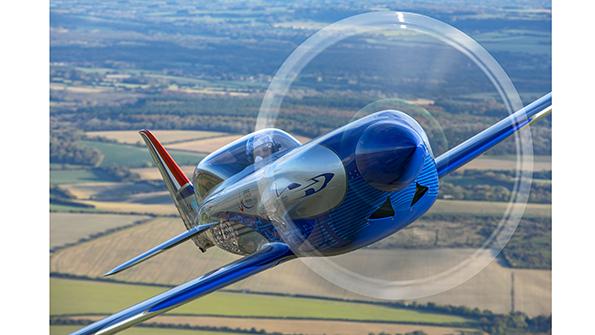Opinion: Why Simulation Is Key To Achieving Net-Zero Carbon Emissions

Discussions of net-zero aviation and cleaner energy took center stage at the Farnborough International Airshow this year. The success of ambitious targets set by governments will depend on all stakeholders, from manufacturers to industry airline giants. The holistic and intuitive use of engineering simulation, virtual prototyping and digital twins can help make the net-zero air mobility revolution a reality. For critical changes to affect air travel, the production of more sustainable aviation fuels and the reinvention of existing technologies must be accelerated. This will require the cooperation of every part of the supply chain to conceive, develop, manufacture and certify new commercial aircraft. Facilitating such cooperation will require design and simulation software built on open platforms that can seamlessly exchange data.
Today, 97% of aerospace and defense executives are ready to reinvent their businesses digitally. The industry trends initiating this transition are driven by social, political and technological shifts—such as environmental regulations, rising fuel costs and advances in batteries, sensors and connectivity. These shifts are all leading to the development of autonomous flight and better fuel efficiency via electric, hydrogen or hybrid options for aircraft. Simulation is essential to managing and designing all these advancements in the aerospace and defense industry.
Simulation Is the Superpower
Last year, the International Air Transport Association approved a resolution stating that the global air transport industry would achieve carbon-neutral status by 2050. With the finish line of this commitment a mere 28 years away, the race to net zero can be thought of more as a marathon than a sprint.
The race has already begun, so organizations need flexibility. Multiphysics simulation gives businesses the ability to explore and predict how aerospace products will or will not work in the real world. Designing multiple options in a comprehensive and cost-effective way can demonstrate if new aviation technologies are economically viable. For example, the combinations of aircraft design architectures, systems, subsystems and components encompass a vast number of variables. The question is: What will these new long-haul commercial aircraft look like? When design begins with a clean sheet of paper, the choices are almost limitless. But when incremental changes are made to existing designs, engineers can imagine their ideal aircraft with greater control of time, cost and risk.
Electroflight, the UK’s most advanced battery engineering company focused on the electrification of flight, has been using simulation to break the world speed record for an all-electric aircraft. The design of the electric aircraft requires structural dynamic and thermal simulation coupled with careful material selection to achieve weight and sustainability targets. Not only did Electro-flight break the record for the fastest all-electric aircraft, it used simulation to solve critical material challenges, selecting materials based on specific requirements and quickly assessing product sustainability at the early stages of design, which minimized costly changes at later stages of development.
The Challenge of Regulation
An obstacle that many organizations face during the journey to net zero is the lengthy and problematic certification process. To enable significant transformation, a more constructive approach to certification must be created. Regulatory restraints slow the race toward better, more sustainable fuels. Breaking barriers in aviation sustainability will require discussions and immediate changes to certification operations.
The industry is waiting for a push from governments that control agencies and regulators to progress and accelerate these changes. Current certification standards and processes need to evolve for industry leaders to meet ambitious net-zero targets. Engineering simulation will play a key role in delivering a body of evidence to support certification changes.
Making Good on the Global Net-Zero Pledge
Organizations must rely on technologies that can predict different scenarios virtually, and numerical simulation—specifically multidomain simulation—is essential to achieving this.
Simulation offers the possibility of modeling and testing the behavior of critical aircraft parts according to a multitude of physical parameters. Prototypes and physical tests, in contrast, are very costly and time-consuming. Simulation is therefore a key tool in the decision-making process that will help determine the best solution as quickly as possible in the product design life cycle and thereby drastically accelerate the market launch of the decarbonized aircraft.
Mariano Morales is ANSYS Inc. senior manager for technical account management, aerospace and defense and industrial equipment in Europe, the Middle East and Africa.
The views expressed are not necessarily those of Aviation Week.


